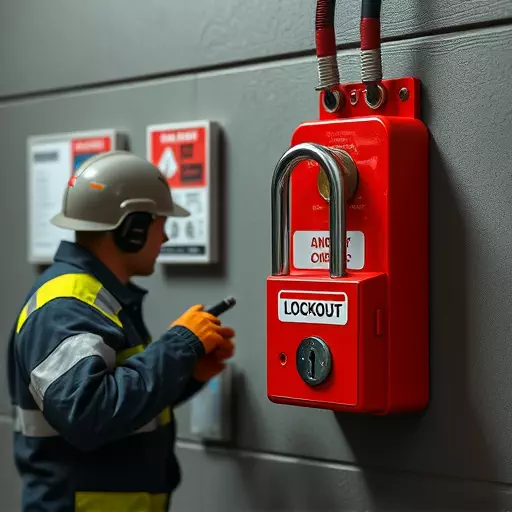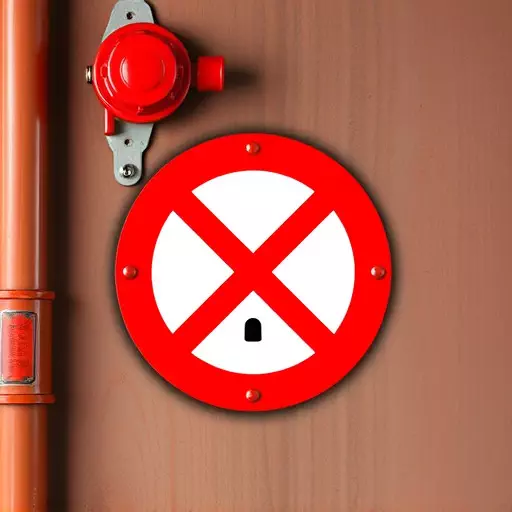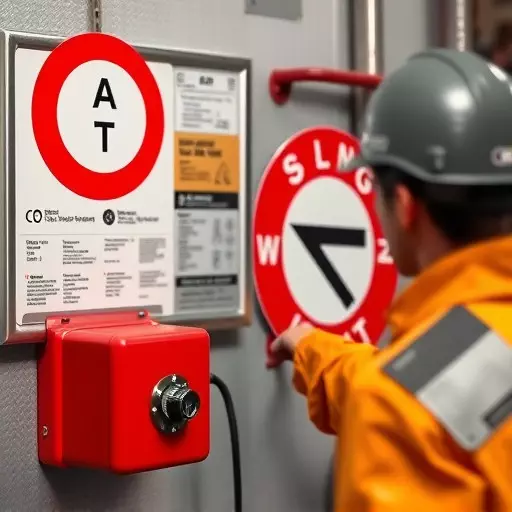Lockout/Tagout (L/T) is an essential safety practice in industrial settings, preventing accidental energy release during maintenance. OSHA's role involves mandating comprehensive compliance training guidelines for energy control, communication, tagging, and de-energizing equipment. Regular lockout tagout compliance training cultivates a culture of awareness, empowering workers to identify hazards and maintain a safe environment. OSHA lockout tagout standards require understanding risk assessment, proper locking techniques, and effective communication, with tailored procedures for unique workplace needs. Practical, hands-on training enhances knowledge retention, while regularly updating energy control procedures ensures a robust safety system.
Electrical safety is a non-negotiable aspect of any workplace, and proper lockout/tagout (L/T) practices are critical to prevent electrical hazards. This comprehensive guide explores the essential components of effective L/T compliance training, as outlined by OSHA standards. From understanding the fundamentals of L/T procedures to implementing hands-on energy control strategies, we delve into best practices to ensure worker safety and mitigate risks associated with electrical equipment.
- Understanding Lockout/Tagout: A Basic Overview of OSHA Standards
- Importance of Electrical Safety Training for Workers
- Key Components of Effective Lockout Tagout Compliance Training
- Practical Energy Control Procedures: Hands-on Training Strategies
- Common Mistakes to Avoid During Lockout/Tagout Training Sessions
Understanding Lockout/Tagout: A Basic Overview of OSHA Standards

Lockout/Tagout (L/T) is a critical safety practice in industrial settings, aimed at preventing accidental energy release during maintenance or repair work. It’s a comprehensive system that involves de-energizing equipment and securing it to prevent operation by unauthorized personnel. OSHA (Occupational Safety and Health Administration) plays a pivotal role in ensuring workplace safety through its lockout tagout compliance training guidelines. These standards mandate clear communication, proper tagging, and effective energy control procedures during maintenance activities.
OSHA’s lockout tagout standards are designed to safeguard workers from electrical hazards by ensuring that equipment is thoroughly de-energized before work begins. This involves using locks or tags on energy control devices like circuit breakers, valves, or power supplies. The process requires specific steps, including notification, consultation with trained personnel, and proper tagging. By adhering to these OSHA lockout tagout standards, companies can mitigate risks, ensure worker safety, and maintain compliance with legal requirements, thereby fostering a culture of excellence in workplace safety.
Importance of Electrical Safety Training for Workers

Electrical safety is a paramount concern in any industrial setting where electrical equipment is involved. This is where comprehensive lockout tagout compliance training comes into play, serving as a crucial component in ensuring worker safety and preventing accidents related to electric shock or electrocution. OSHA (Occupational Safety and Health Administration) has established specific lockout tagout standards that organizations must adhere to, emphasizing the importance of energy control procedures training for all employees.
Regular electrical safety training is essential to foster a culture of awareness and accountability among workers. It equips them with the knowledge and skills needed to identify potential hazards, correctly apply lockout/tagout techniques on de-energized equipment, and understand their roles in maintaining a safe working environment. By adhering to OSHA guidelines and implementing robust energy control procedures training programs, companies can significantly reduce electrical hazards and create a safer workplace for all employees.
Key Components of Effective Lockout Tagout Compliance Training

Effective lockout tagout compliance training is essential for organizations to ensure worker safety when dealing with energy sources. The OSHA lockout tagout standards outline critical procedures that must be followed, encompassing a comprehensive understanding of risk assessment, proper locking out techniques, and thorough communication protocols. These standards are designed to prevent accidents caused by unexpected energy release during maintenance or repair activities.
Training should cover specific energy control procedures tailored to the workplace’s unique needs. This includes identifying all potential energy sources, understanding the associated hazards, and implementing suitable lockout/tagout methods. Equally important is educating employees about the proper use of lockout devices, ensuring they are trained in visual communication systems for clear identification of locked-out equipment, and fostering a culture of safety consciousness to prevent bystander harm.
Practical Energy Control Procedures: Hands-on Training Strategies

Practical Energy Control Procedures: Hands-on Training Strategies are essential components of any comprehensive lockout tagout compliance training. OSHA’s lockout tagout standards emphasize the importance of real-world simulations to ensure workers can safely apply these procedures in their daily tasks. These hands-on strategies involve engaging participants in live demonstrations and interactive exercises that replicate workplace scenarios, fostering a deeper understanding of energy control measures.
By participating in these practical sessions, trainees learn to identify potential hazards, operate various equipment and tools used for energy control procedures training, and effectively implement lockout/tagout techniques. This experiential learning approach not only enhances knowledge retention but also prepares workers to respond promptly and accurately during actual emergencies or maintenance situations, thereby upholding safety standards and preventing accidents in the workplace.
Common Mistakes to Avoid During Lockout/Tagout Training Sessions

During lockout/tagout training sessions, there are several common mistakes that can undermine the effectiveness of the exercise and pose potential safety risks. One of the most frequent errors is failing to properly communicate and coordinate with all team members involved. Effective communication ensures everyone understands their roles and responsibilities during the energy control procedure, which is crucial for a successful lockout. Additionally, rushing through the process without thorough understanding or skipping essential steps can lead to mistakes. Each step in the lockout/tagout procedure must be diligently followed as per OSHA lockout tagout standards to guarantee safety.
Another common pitfall is neglecting to use proper labeling and tagging techniques on energy sources. Clear and consistent labeling helps identify locked-out equipment, ensuring no one accidentally turns it back on. Training should emphasize the importance of using standardized tags that indicate the specific energy source’s status and authorized personnel responsible for its lockout. Moreover, not conducting regular refreshers or updates to energy control procedures can result in outdated practices. Keeping training current with changes in equipment, protocols, or workplace layouts is essential to maintaining a robust lockout tagout compliance system.


